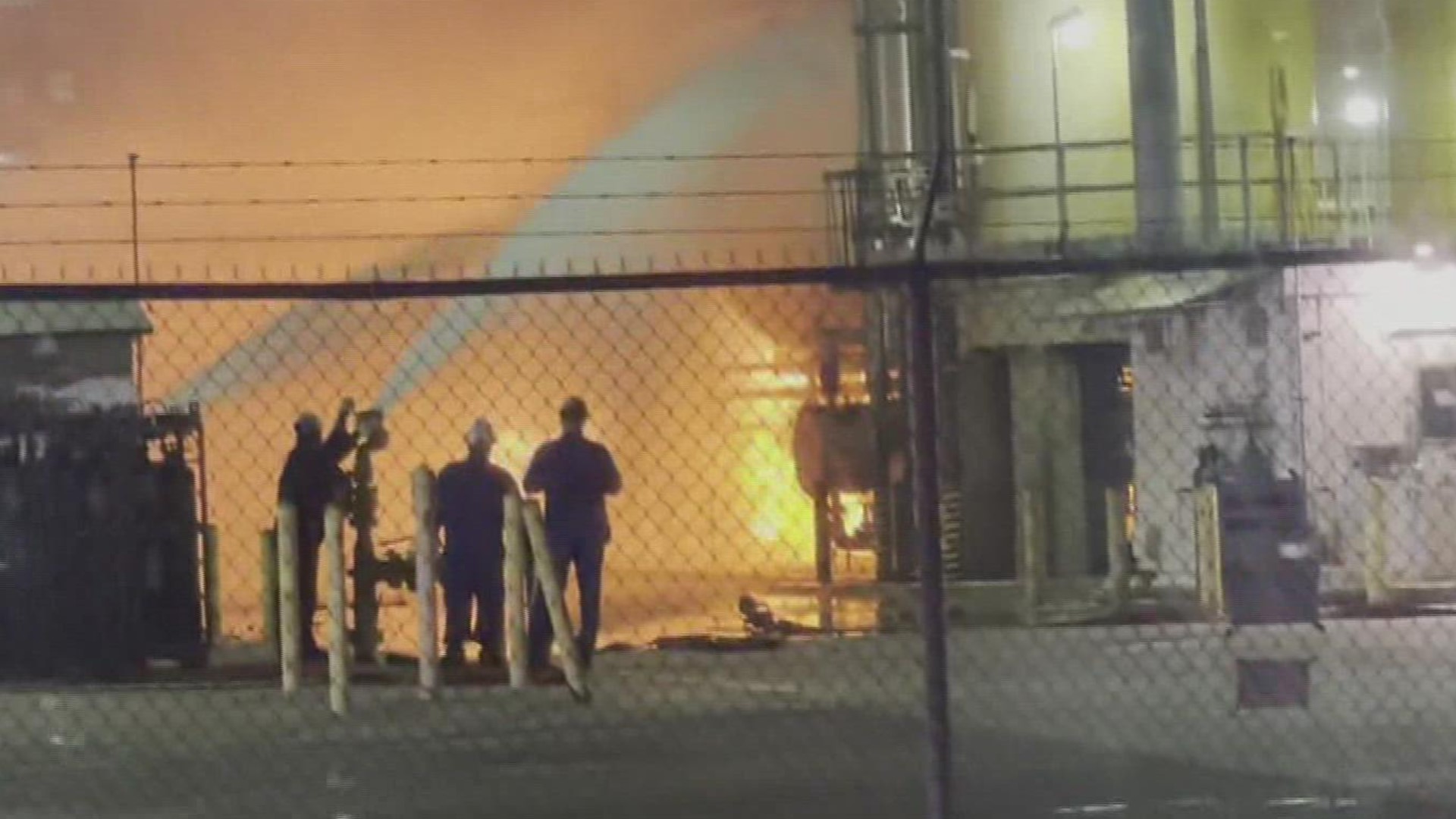CORPUS CHRISTI, Texas — A report on the Valero Corpus Christi Refinery East Plant fire last November revealed the release of chemicals did not stop when the fire did.
The information is available in a Texas Commission on Environmental Quality report. It revealed emissions lasted almost 85 hours, releasing 32 pounds of hydrogen sulfide--breaking Valero's emission limit, which is zero pounds.
That was one of several chemicals Valero exceeded the limit its permitted for.
Adan Gonzalez works at the Bar-B-Q man, working the morning of Nov. 3, 2022. While the Valero East Plant fire was being contained nearby.
"I heard like a boom, you know," Gonzalez said. "And I heard the building shake and then I, I really didn't know what it was at the time."
He said nothing like that happened in the 10 years since he started working there, but has not changed his mind about how safe he feels there.
"I'm pretty sure they're, they do their job and clean, figure everything out, but not really, not for me," Gonzalez said. "I still feel safe around here."
According to the TCEQ Emission Event Report, dated November 22, 2022, emissions lasted 84 hours and 55 minutes. In that time, 10 fugitive gas emissions were released, gases they are not allowed to emit.
The smallest amount of fugitive gasses released totaled around 1.5 pounds, all the way up to more than 821 pounds. About 2,951 pounds of sulfur dioxide were released--however, Valero's emission limit from its permit is less than two pounds.
Gonzalez was not signed up for the reverse alert sent around 7:10 a.m. on Nov. 3. Instead, he found out about the fire from his boss' son several hours later. The TCEQ report said the fire began around 5:50 a.m. He said he hopes the event will help speed up communication.
"When this happened, I mean, I guess maybe three hours later, three or four hours later we found out," Gonzalez said. "So, I don't know if there's a way how to make it where it's quicker, if there's a possible way."
3NEWS received a statement from Valero regarding TCEQ's report:
"Regarding the Nov. 3, 2022 incident, Valero immediately initiated its Emergency Operations Command center and activated onsite and third party resources to respond, mitigate emissions, and monitor air quality. Ninety-nine percent of the event-related emissions largely occurred at the beginning of the incident, and some reported emissions were due to the use of the flare during the controlled shut-down of the unit.
Air monitoring was conducted by the Refinery Terminal Fire Company (RTFC) in the surrounding area and results indicated no issues of concern throughout the event. Additionally, portable continuous air monitors were strategically located in the unit, also indicating no air quality issues. All air quality monitoring systems were operational for the duration of the incident."
The TCEQ report also details the cause of the emission event. It said, "Loss of containment and localized fire at the H2 system resulted in management of residual material at the facility flare control device."
The fire was contained on Nov. 3 and the report determined the refinery utilized appropriate procedures to control the event.
More from 3News on KIIITV.com:
- Padre Balli Park sees low reservations due to ongoing dispute
- Packery Channel repair costs climb by $2.6M due to additional erosion
- Jimmy Kimmel invites Jason Grosboll, aka 'Popcorn Guy', to Oscars
- Health district asks residents to report at-home COVID test results
- Nueces County traffic stop turns into largest liquid fentanyl drug bust in US history
Subscribe to our YouTube channel for your daily news and exclusive extended interviews.
Do you have a news tip? Tell 3!
Put your name and contact information below, or email tell3@kiiitv.com, so we can get in touch with you about your story should we have questions or need more information. We realize some stories are sensitive in nature. Let us know if you'd like to remain anonymous.
If you do not have a photo/video to submit, just click "OK" to skip that prompt.

